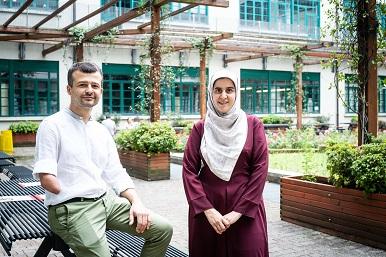
Gutta cavat lapidem – the Romans used to say: “a drop wears away a stone”. The interaction mechanism between a liquid and a solid surface was apparently a good source for proverbs back in the Roman empire, but also one of the main focuses of the “Surface Engineering and Fluid Interfaces” Laboratory, SEFI Lab, in the Department of Materials Science at the University of Milano-Bicocca.
One of the most common and effective techniques to investigate the solid liquid interaction is the measurement of the contact angle. Imagine placing a liquid drop on a solid surface: the contact angle will span from 0°, when forming a film that spreads on the surface, to 180°, in case the drop preserves a spherical shape, as a liquid marble. The introduction of low-cost digital cameras, as well as software and libraries for image analysis, has made contact angle measurement potentially accessible to every laboratory. However, the process of analyzing and automatically extract the contact angle values from digital images is far from trivial.
In a recent study published on Advances in Colloid and Interface Science, “Contact angle measurements: From existing methods to an open-source tool, Advances in Colloid and Interface Science”, dr. Raziyeh Akbari and prof. Carlo Antonini have reviewed the current methods for contact angle measurement and have ranked them based on their accuracy. In addition, they have created a dedicated open-source software, Dropen and made it available at BOA, the Bicocca Open Access public repository. Thus, other researchers can use the software for free and eventually further develop it.
What’s next? Combining the ancient Roman wisdom with Persian engineering skills, Akbari and Antonini are now working on a novel system to harvest water from the atmosphere, inspired to the Badgir, the traditional Persian architectural element used to create natural ventilation and passive cooling in buildings in Iran (Dr. Akbari’s country of origin). It is a work-in-progress, and you need to wait a bit to get more details it However, in case you want to have a glimpse and you read Italian, feel free to have a look at Repubblica’s news on the project, presenting the project idea and background.
The start of the research activity of Akbari at the University of Milano-Bicocca, in February 2020, was made possible by the financial support of a scholarship granted by ICTP, through the Training and Research in Italian Laboratories (TRIL) programme. The programme supports researchers from developing countries (Iran, in this case), to come and conduct research activities in Italy. The scholarship was co-financed by the University of Milano-Bicocca. Since March 2021, Akbari’s project is supported by the Department of Materials Science under the “Dipartimenti di Eccellenza” funding scheme.